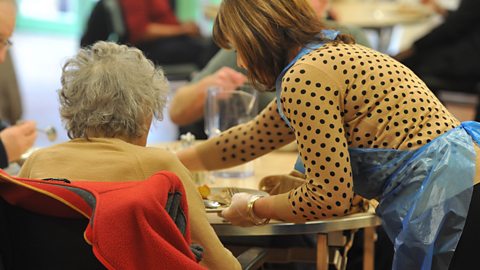Population trends in the UK
As with many other developed countriesCountries where people have a high standard of living. the UK's population has gone through the demographic transition model.
The UK's population rapidly rose between 1760 and 1880, as deaths rates fell due to better sanitation and food supplies, whilst birth rates remained high (Stage 1). There was then slower growth up to 1940, as death rates continued to drop due to medical advances but birth rates dropped rapidly due to the use of birth control and the industrialisation of the country (Stage 3). By 1940, the UK entered stage 4, the low fluctuating stage.
As a result, the UK has an ageing population.
Comparison of population pyramids for the UK in 2008 and 2018
This population structure is caused by a declining birth rate as well as increasing life expectancy.
Declining birth rate
- Women at work - there are now more women in work, which increases the age at which women try to have a baby. As a result, women only give birth to children for a relatively short period and so there are fewer births.
- Tertiary education - there are also now more women going to university and pursuing careers. They may either delay having children or decide not to have children at all.
- Education - family planning education is available in schools and so a greater number of people know how to control their own fertility and have fewer unplanned babies.
Increasing life expectancy
- Development of universal free healthcare - the development of vaccinations and the National Health Service reduces deaths from diseases such as TB and measles. This increases the number of people living to 65 years and older.
- Development of medical technology - the development of new drugs that treat cancer and other degenerative diseases such as Alzheimer's has increased life expectancy and so increased the number of people aged 65 and over.
- Decrease in manual employment - many primary and secondary jobs such as coal mining and steel making were arduous and dangerous, which reduced life expectancy. The decline in the number of people in these jobs and the increase in tertiary sector office-based jobs has increased life expectancy and so the number of people aged over 65.
Effects of an ageing population
- Healthcare - there will be a greater need for healthcare, particularly geriatric wards and for expensive specialist health services such as hip replacements. This will mean higher costs and also a potential shortage of staff.

- Welfare services - an older population will need an increase in services such as meals on wheels and home care. This will need extra staff and will also cost more.
- Housing issues - there will also be housing problems as there will be an increase in demand for more retirement homes. These are expensive and could well increase taxes paid by the working population.

- Economic costs - as well as the increased costs for health and welfare services there will also be increased pension costs. This could result in a fall in the value of pensions, causing increases in pensioner poverty, or tax rises may be required to meet the needs of the increasing population of pensioners.